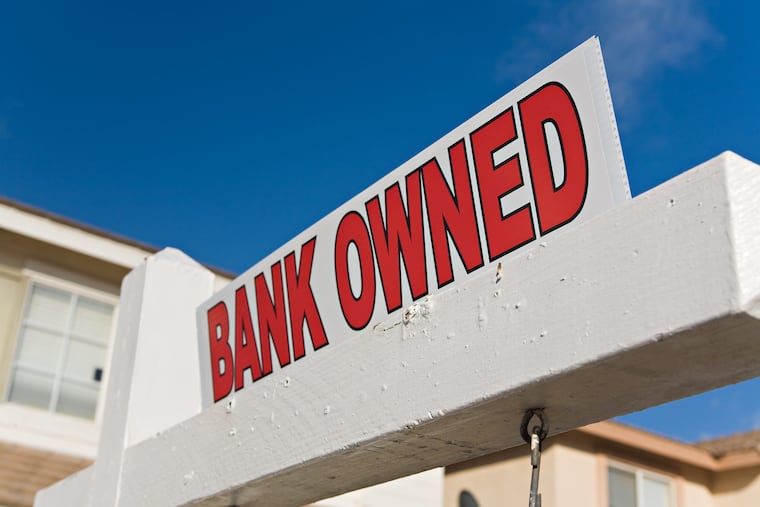Foreclosure activity nationally and locally has hit pandemic highs but is still below normal
Despite spikes in filings, foreclosure activity nationwide is at about 57% of where it was in the first quarter of 2020.

Foreclosure starts and bank repossessions across the country were at their highest levels in two years in March, thanks to the expiration of pandemic homeowner protections. But they are still well below normal.
Nationwide, the number of properties with foreclosure filings in March — roughly 33,000 — was up 29% from February and 181% from last March, according to a report by real estate data provider Attom. That’s the highest number since March 2020, when there were almost 47,000 foreclosure filings.
Lenders repossessed roughly 4,400 properties nationwide in March, up 67% from the month before.
In the Philadelphia metropolitan area, the foreclosure process started for 1,375 properties in the first quarter of the year — one of the highest numbers in the major metros, according to Attom.
» READ MORE: Foreclosure starts tick up in Pennsylvania, N.J., and nationwide
Foreclosure activity is gradually returning to normal levels following the expiration of the federal moratorium and the Consumer Financial Protection Bureau’s enhanced guidelines for mortgage servicers, said Rick Sharga, executive vice president of market intelligence for Attom.
Even with these large increases, foreclosure activity is still at about 57% of where it was in the first quarter of 2020, the last quarter before the federal government started pandemic consumer protection programs, he said.
“It’s likely that we’ll continue to see significant month-over-month and year-over-year growth through the second quarter of 2022 but still won’t reach historically normal levels of foreclosures until the end of the year at the earliest, unless the U.S. economy takes a significant turn for the worse,” Sharga said in a statement.
» READ MORE: Delinquent on Your Mortgage? Don’t Hide
New Jersey is a state that typically has high foreclosure rates compared to others. It ranked second behind Illinois last month, when one in every 2,022 housing units in the Garden State had a foreclosure filing against it. In Delaware, which also has a relatively high rate, one in every 2,579 housing units had a foreclosure filing. Nationwide, one in every 4,215 properties had a filing in March.
Typically, some event in a homeowner’s life, such as losing a job or getting sick, causes a foreclosure. Anecdotally, Philadelphia attorney Lopez T. Thompson said he’s seen an increase in divorce and estate cases at his practice over the last two years. The death of a homeowner can leave a property at risk of foreclosure when legal ownership is in question. The breaking up of a household through divorce can leave someone with a home that’s unaffordable on one income.
» READ MORE: N.J. and Pa. homeowners who are struggling because of the pandemic can apply for federal funds
“I have seen an increase in the reasoning for foreclosures being the relationships just going by the wayside,” Thompson said. “I’ve never seen so many divorces in my practice at one time. People were coming out the woodwork.”
He also has seen elderly homeowners struggling with isolation during the pandemic slip into depression and stop paying their bills.
Philadelphia offers grants to prevent foreclosure, and its Residential Mortgage Foreclosure Diversion Program is meant to help homeowners work out agreements with lenders. Homeowners also can negotiate with their lenders on their own. Struggling owners also can apply for federal funds to help them stay in their homes. Many don’t know about the assistance available, what their options are, or how to sell their properties if their situation becomes dire.
“People shouldn’t lose what they worked for all those years,” Thompson said.